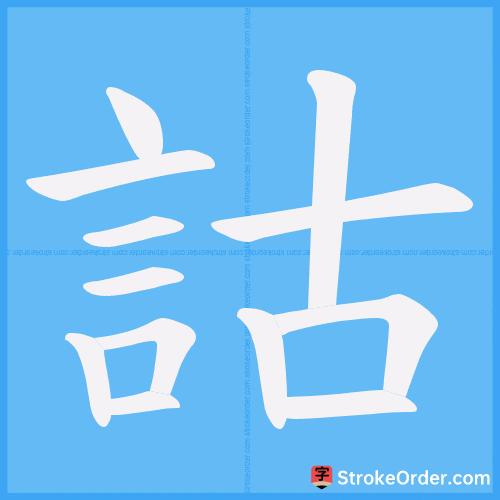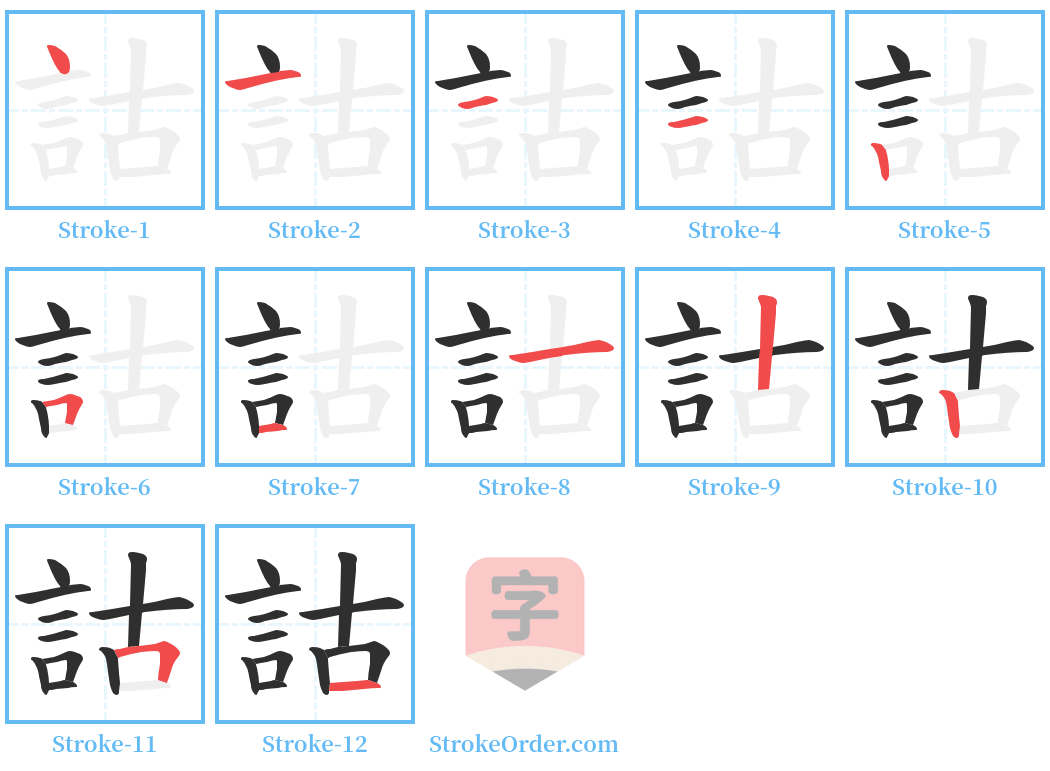詁 Stroke Order
Animated Stroke Order of 詁

Stroke Order Diagrams for 詁

Information of 詁
Pinyin
gǔ
Radical
言
Strokes
12 strokes
Usage
★★
Definition
詁 gǔ
1. 用今語解釋古語或用通語解釋方言。亦泛指解釋字義。
- To explain ancient language or dialect using contemporary words. It generally refers to the interpretation of meanings.
2. 古言古義;詞語的意義。
- Ancient words and meanings; the meaning of a word.
---
詁 gǔ
[動]
【本义】: 用通行的話解釋古代語言文字或方言字義
- [Verb] 【Original meaning】: To explain ancient language or dialect using common language.
【造字法】: 會意。从言,从古,古亦聲。
- [Character formation]: Ideographic; composed of the elements for "speech" and "ancient," where "ancient" also serves as a phonetic component.
1. 後漢桓譚傳鄭興傳注皆引說文、訓古言也
- The commentaries on "The Biography of Huan Tan" from the Later Han dynasty all reference "Shuo Wen" and interpret ancient speech.
【引】
1. 《說文》:詁,訓故言也。
- "Shuo Wen": 詁 means to interpret ancient language.
1. 詁者,古也。古今異言,通之使人知也。——《毛詩·周南·關睢》詁訓傳疏
- "To explain is to refer to the ancient. Different language across ages can be conveyed for understanding." — "Mao Shi, Zhou Nan, Guan Sui" commentary.
2. 詁,訓故言也。——《後漢書·桓譚傳》注
- "詁 means to interpret ancient language." — Commentary on "The Book of the Later Han, Biography of Huan Tan."
3. 《漢書·揚雄傳》:雄少而好學,不爲章句,訓詁通而已,博覽無所不見。
- "In 'The Book of Han, Biography of Yang Xiong': He was young and fond of learning, not confined to phrases but simply understood interpretations, widely read across all subjects."
【例】
又如: 詁解(用當代語言解釋古語); 詁訓(解釋古書的文義。也用以指古言古義。同故訓)
- Example: 詁解 (to use contemporary language to explain ancient words); 詁訓 (explaining the meanings of ancient texts, also referring to ancient words and meanings, synonymous with 古訓).
---
詁 gǔ
[名]
古言古義;詞語的意義
- [Noun] Ancient words and meanings; the meaning of a word.
【引】
1. 陸游《萬卷樓記》:同字而異詁,同辭而異義。
- "Lu You in 'Wanjuan Lou Ji': Same characters but different meanings, same phrases but different significance."
【例】
又如: 詁釋(古言古語的解釋)
- Example: 詁釋 (the explanation of ancient words and phrases).